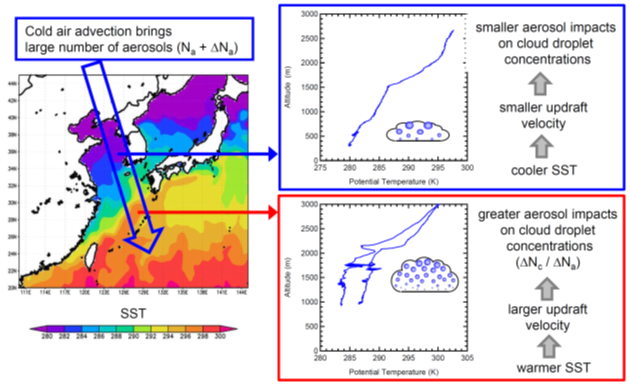Aerosol-cloud interaction and SST front
| A02-K7. Aerosol-cloud interaction and SST front | |
|---|---|
| PI | Makoto KOIKE#(Associate Professor, Tokyo University) |
[Doctral degree: #Meteorology]
From the aircraft measurements we conducted over the East China Sea in 2009, we found that warm SST over the Kuroshio ocean current likely modulates aerosol-cloud interaction (Koike et al., JGR 2012). Cold air advection from China to the East China Sea was found to bring not only a large number of aerosols but also a dry and cold air mass that destabilized the atmospheric boundary layer, especially over the warm Kuroshio ocean current. Over this high-SST region, greater updraft velocities and hence greater number of cloud droplet likely resulted. As a result, cloud droplet number concentration correlates partly with near-surface stratification evaluated as the difference between the SST and 950-hPa temperature (SST – T950). We hypothesize that the low-level static stability determined by SST and regional-scale airflow modulates both the cloud microphysics (aerosol impact on clouds) and macro-structure of clouds (cloud base and top altitudes, hence cloud liquid water path).
In this study we already conducted aircraft measurements with ship-borne ones over the Kuroshio Extension in July 2013. Data obtained in these measurements are being analyzed in order to understand the impact of SST on aerosol-cloud interaction. We will also conduct regional scale model calculation to evaluate this impact.


